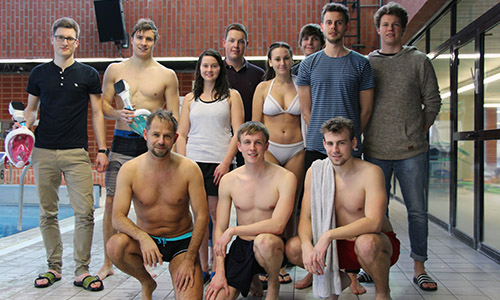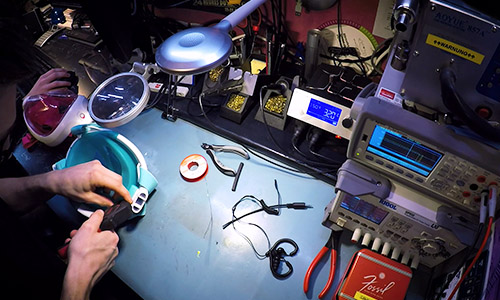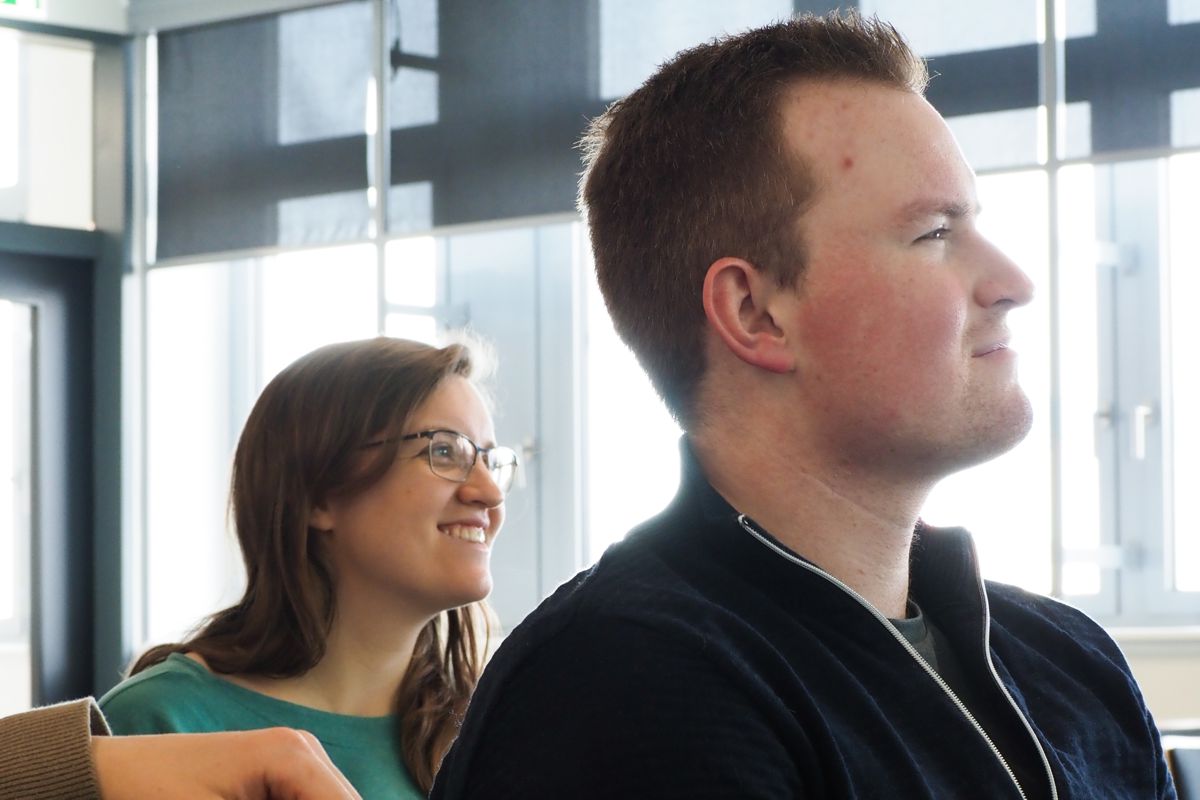Communication Unit for Diving Masks

Overview
In this project we - a group of nine Students (Electrical Engineering) - developed a Communication Unit for full-face Diving Masks.
Under the guidance of Prof. Dr. Schmidt and M. Sc. Thorben Kaak and with the help of the Chair of Digital Signal Processing and System Theory at the Faculty of Engineering (University Kiel), we had the Chance to experience a new way of working as a Team and learning to coordinate tasks. Furthermore we had the opportunity to apply our knowledge we gained during our last semesters.
The Idea
The idea was to develope a fully functional, bidirectional communication unit for either two diving masks or one diving mask and a person to talk to via smartphone. This led to some very basic requirements such as the unit having to be waterproof, small and powerful enough to establish a good connection. We had to design and print custom enclosures, program reliable software and get all of this done as a team.
Who is going to need it?
-
1st Case:
Imagine a wonderful holiday with your friends or your boyfriend/girlfriend. The location would be somewhere close to the sea at warm temperatures, so you can go out snorkling and exploring the reefs. Looking at all the great corals and animals is worth sharing, right? With our solution, you are able to talk to your partner right there and share the moment. Who wouldn't want to spend some more money on snorkling equipment, just to share this experience.
-
2nd Case:
High performance swimming. Imagine a world-class swimmer, who is attending a tournament next week. He can crawl very good and has a dedicated trainer. Now, the trainer can speak right through his smartphone to the swimmer, giving him advice on how to improve his swimming style. The productivity would rise and soon he would win his important tournament.
Planing & Construction
We started gathering ideas on how  to archive our goals at this project. The main goal was a consistent and reliable connection between two masks or a mask and a smartphone. Keeping the requirements we mentioned earlier in mind, this goal was pretty hard to achieve, as we had very little experience on how to manage tasks and get things done as a team.
to archive our goals at this project. The main goal was a consistent and reliable connection between two masks or a mask and a smartphone. Keeping the requirements we mentioned earlier in mind, this goal was pretty hard to achieve, as we had very little experience on how to manage tasks and get things done as a team.
We split our team up in a couple of smaller groups to work more efficiently. The first team was building the hardware into the diving mask (microphone & earspeakers).
The second team had the task to design an enclosure that would fit all our equipment into the head of the snorkel. This enclosure was designed with Autodesk Inventor Pro and printed with the use of a high-end 3D-printer. It contains the SoC-Board (with all of the ports desoldered to save space), a Li-Po battery and a self made circuit containing a high efficiency step-down converter and a Li-Po battery management IC with automated shutdown when the battery is low. It also features a 3.5mm headphone Jack to connect the microphone and earspeakers from the mask.
The third team was solving all the software-related problems including transmission protocols and audio enhancement tools. We used a SoC-Board (NanoPi M3) running Linux Debian and developed a custom build version of the Open-Source Software Mumble with the programming Languarge "GO". It had to run headless without any graphical user interface. One NanoPi acted as server by opening a WiFi accesspoint, so that other masks or smartphones could easily connect and open a groupchat within mumble. Voice transmission happened over TCP/IP which provides a high quality sound.
Future Plans
Right now, we finished our project and produced two diving mask prototypes with working communication units. To show the functionality and design, we also made a clip about our work and tested the masks at the university's sports centre. For the future, we are planning do some research on how this product would sell and work on the business market. It also could give the opportunity for potential Bachelor- and Master-theses on how to process the audio within the SoC-Boards and filter some unwanted noise like breathing or water flowing. It also could be made with a lot less power so the enclosure would be way smaller than our prototypes.
All these improvements and steps are documented, so everyone who is interested in this project can start right away and be part of this project.
Also featured in:
- SAT1 SH/HH
- NDR1 - Welle Nord
- Kieler Nachrichten
- Press Service - University of Kiel
Participating Students
- Pascal Eisele

- Lukas Gernoth
- Fabian Kühtz
- Frederik Kühne
- Nils Johannsen
- Alexander Neubert
- Jonas Person
- Leon Pohl
- Jonas Wilinski
- Viktor Willich
Supervisors
- Thorben Kaak
- Gerhard Schmidt

 Visit of the Hans Böckler Foundation
Visit of the Hans Böckler Foundation